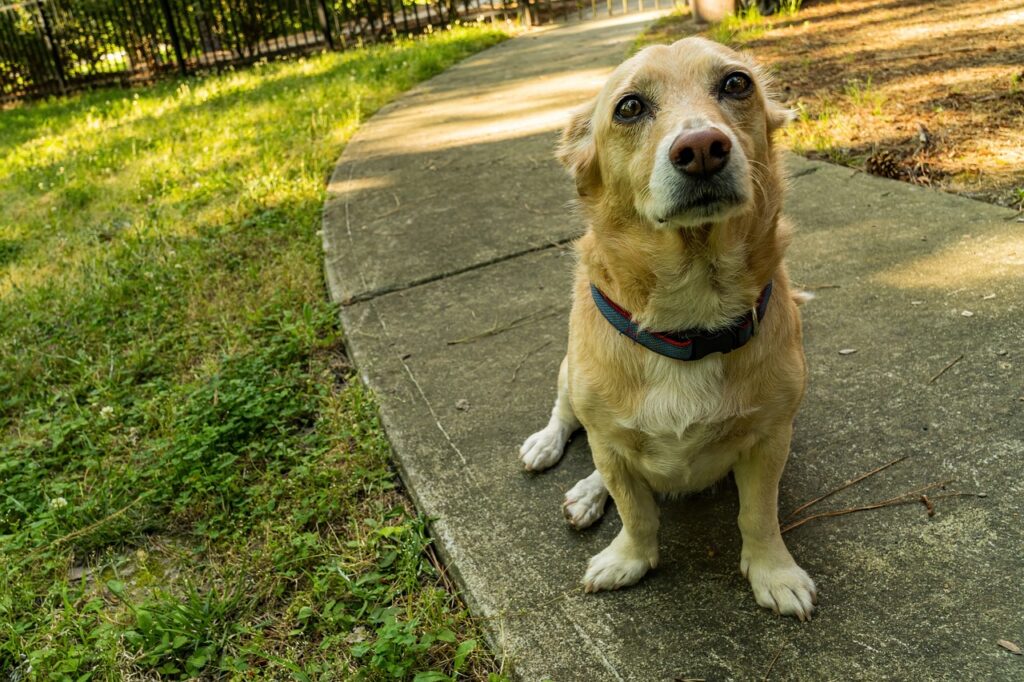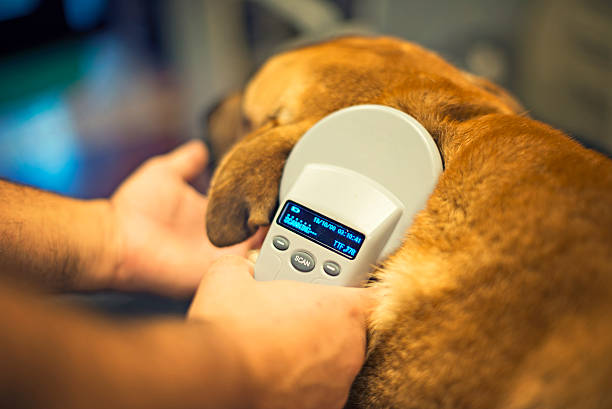There could be various reasons why your dog is displaying pacing behavior, and it’s important to discern the cause to address the issues effectively. Sometimes, a pacing dog may be trying to convey something to you, while at other times there could be a physical concern involved. If you’re unsure about what’s happening, it’s advisable to seek expert advice for an evaluation of your pet.
Causes of Dog’s Pacing
Dogs’ pacing can be caused by a variety of factors, both physical and psychological. Physical factors that can cause a dog to pace include pain, discomfort, or an illness.
Psychological factors leading to pacing can include anxiety, fear, or boredom. If your dog is pacing for an extended period, it is important to take it to the veterinarian to rule out any underlying health issues.
Here are the most common reasons why a dog starts pacing:
Anxiety
You’re not alone if you have a dog that paces due to anxiety. Many dogs exhibit this behaviour due to stress or fear. You can do a few things to help your dog feel more at ease and reduce the pacing.
One of the most important is to identify the cause of your dog’s anxiety. Once you know what’s stressing it out, you can start working on a solution. If your dog is dealing with separation anxiety, ensure that
Some dogs may benefit from medication or therapy, while others may need some extra love and attention. You can help your anxious dog lead a more relaxed life with patience and perseverance.
Restlessness


When a dog is pacing, it’s usually a sign that the animal is restless and anxious. There can be many reasons for this behaviour, from physical and emotional issues.
If you have a dog pacing and can’t figure out why taking it to the veterinarian for a check-up is important, it may suffer from canine cognitive dysfunction.
Older dogs are more prone to diseases that cause dog pace. Elderly dogs should have regular vet visitation, especially if they exhibit restlessness.
Nervousness
Dogs pace for many reasons; one of the most common reasons is nervousness. Dogs may pace when they’re in an unfamiliar place, around new people or animals, in a car, or hear loud noises.
Some dogs constantly pace, while others only pace for short periods. If your dog is pacing due to nervousness, you can do a few things to help it feel more comfortable. You can try to keep it calm by petting or talking to it in a soothing voice, and you can also give it some treats or toys to distract it from its nerves.
If your dog’s pacing becomes disruptive or obsessive, it’s important to consult with your veterinarian to rule out any underlying medical causes.
Excitement


Most dogs often pace back and forth when they’re excited, but what’s the reason behind this behaviour? There are a few reasons dogs might pace when they’re excited.
One reason could be that the dog is trying to burn off energy. When dogs get overly excited, they may start pacing to release some energy.
Another possibility is that the dog is trying to show dominance over the situation or other people or animals in the area. Sometimes, a dog might start pacing if it’s feeling separation anxiety or nervousness and is looking for a way to calm down.
Boredom
A dog pacing may also feel bored. Dogs are often known for their playful and energetic personalities, but when left alone with nothing to do, they can quickly become bored. This boredom can lead to pacing and restless behaviour as the dog tries to find something to occupy its time.
While there are things to keep your dog active and several toys that can help keep dogs entertained when their dog owners are away, some dogs will still pace out of boredom.
Habit
Dog paces for various reasons such as anxiety, boredom, and habit. Some dogs constantly pace, while others only do it when left alone. If your dog is pacing out of habit, you can do a few things to help break the habit.
Try increasing the amount of exercise your dog gets or providing them with more toys and activities to keep them busy. If that doesn’t work, you may need to consult a behaviourist or a professional dog trainer to help correct the problem.
Diagnosis


If your dog is pacing, it’s important to visit the vet to determine the cause. There are many reasons for a dog’s pace, some of which are relatively minor and can be treated easily, while others are more serious and may require extensive treatment.
You can ensure your dog receives the best possible care by taking it to the vet for a diagnosis. Diagnostic tests to rule out other diseases and conditions should be performed. These tests may include:
Physical Examination
The vet will examine your dog’s mouth, eyes, ears, and gait.
X-rays
A simple x-ray will help the vet determine whether your dog has broken bones. An x-ray is unnecessary for most other problems that do not threaten your dog’s medical condition.
Blood Tests
A complete blood count (CBC) and a urinalysis may be performed.
Treatment
Treatment will depend on the cause of your dog’s pacing back and forth. Your dog may be pacing back and forth for various reasons, some of which require medical treatment. Your dog must see a veterinarian as soon as possible if it has a fever, vomiting, or diarrhoea.
Other pacing causes, such as anxiety or pain, can often be treated at home. Try to figure out what is causing your dog anxiety and see if there are ways to help alleviate that stress. If your dog is in pain, you may need to speak with your veterinarian about medications or other treatments that can help keep your dog’s health in check.
Ways to Help a Pacing Dog
Several things can be done to help a dog pacing back and forth. One is to try to determine the cause of the pacing. If it is due to anxiety, several things can be done to help calm the dog, such as providing a safe space to relax in, using positive reinforcement training methods, and using calming supplements or aromatherapy.
A dog pacing may have an illness or injury, and treatment of the underlying problem may help stop the pacing.
Prevention


You can do some things to help prevent your dog from pacing. Dog pacing is a common behaviour in dogs, and there are many different reasons why they may do it. However, there are some things you can do to help prevent your dog from pacing.
Keep the Pacing Dog Active
One of the most important things is to get plenty of exercise. If your dog is inactive, it may pace out of boredom. Ensure they have plenty of toys and activities to keep them occupied.
Mental Stimulation
You can also try training your dog using positive reinforcement methods, as this can help keep them mentally stimulated. If your dog is anxious or stressed, you may need to work with a behaviourist to help them with mental stimulation to overcome their anxiety.
In conclusion, a dog may pace back and forth for many reasons. Some of the most common reasons include anxiety, boredom, and excitement. If you notice your dog pacing for no specific reason and showing other symptoms, it is best to take them to the vet immediately to rule out any health concerns. If your dog is exhibiting pacing behaviour for one of the reasons mentioned above, there are ways to help them feel better.



